White matter injury and microglia/macrophage polarization are strongly linked with age-related long-term deficits in neurological function after stroke
- PMID: 25836044
- PMCID: PMC4591088
- DOI: 10.1016/j.expneurol.2015.03.021
White matter injury and microglia/macrophage polarization are strongly linked with age-related long-term deficits in neurological function after stroke
Abstract
Most of the successes in experimental models of stroke have not translated well to the clinic. One potential reason for this failure is that stroke mainly afflicts the elderly and the majority of experimental stroke studies rely on data gathered from young adult animals. Therefore, in the present study we established a reliable, reproducible model of stroke with low mortality in aged (18month) male mice and contrasted their pathophysiological changes with those in young (2month) animals. To this end, mice were subjected to permanent tandem occlusion of the left distal middle cerebral artery (dMCAO) with ipsilateral common carotid artery occlusion (CCAO). Cerebral blood flow (CBF) was evaluated repeatedly during and after stroke. Reduction of CBF was more dramatic and sustained in aged mice. Aged mice exhibited more severe long-term sensorimotor deficits, as manifested by deterioration of performance in the Rotarod and hanging wire tests up to 35d after stroke. Aged mice also exhibited significantly worse long-term cognitive deficits after stroke, as measured by the Morris water maze test. Consistent with these behavioral observations, brain infarct size and neuronal tissue loss after dMCAO were significantly larger in aged mice at 2d and 14d, respectively. The young versus aged difference in neuronal tissue loss, however, did not persist until 35d after dMCAO. In contrast to the transient difference in neuronal tissue loss, we found significant and long lasting deterioration of white matter in aged animals, as revealed by the loss of myelin basic protein (MBP) staining in the striatum at 35d after dMCAO. We further examined the expression of M1 (CD16/CD32) and M2 (CD206) markers in Iba-1(+) microglia by double immunofluorescent staining. In both young and aged mice, the expression of M2 markers peaked around 7d after stroke whereas the expression of M1 markers peaked around 14d after stroke, suggesting a progressive M2-to-M1 phenotype shift in both groups. However, aged mice exhibited significantly reduced M2 polarization compared to young adults. Remarkably, we discovered a strong positive correlation between favorable neurological outcomes after dMCAO and MBP levels or the number of M2 microglia/macrophages. In conclusion, our studies suggest that the distal MCAO stroke model consistently results in ischemic brain injury with long-term behavioral deficits, and is therefore suitable for the evaluation of long-term stroke outcomes. Furthermore, aged mice exhibit deterioration of functional outcomes after stroke and this deterioration is linked to white matter damage and reductions in M2 microglia/macrophage polarization.
Keywords: Aging; Cerebral blood perfusion; Distal middle cerebral artery occlusion (dMCAO); Microglia.
Copyright © 2015 Elsevier Inc. All rights reserved.
Figures
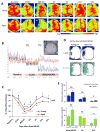
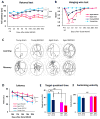

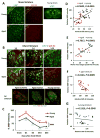
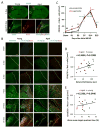
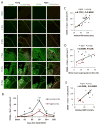
Similar articles
-
Interleukin-4 Is Essential for Microglia/Macrophage M2 Polarization and Long-Term Recovery After Cerebral Ischemia.Stroke. 2016 Feb;47(2):498-504. doi: 10.1161/STROKEAHA.115.012079. Epub 2016 Jan 5. Stroke. 2016. PMID: 26732561 Free PMC article.
-
A Post-stroke Therapeutic Regimen with Omega-3 Polyunsaturated Fatty Acids that Promotes White Matter Integrity and Beneficial Microglial Responses after Cerebral Ischemia.Transl Stroke Res. 2016 Dec;7(6):548-561. doi: 10.1007/s12975-016-0502-6. Epub 2016 Oct 7. Transl Stroke Res. 2016. PMID: 27714669 Free PMC article.
-
Brain-selective mild hypothermia promotes long-term white matter integrity after ischemic stroke in mice.CNS Neurosci Ther. 2018 Dec;24(12):1275-1285. doi: 10.1111/cns.13061. Epub 2018 Sep 16. CNS Neurosci Ther. 2018. PMID: 30295998 Free PMC article.
-
Post-stroke administration of omega-3 polyunsaturated fatty acids promotes neurovascular restoration after ischemic stroke in mice: Efficacy declines with aging.Neurobiol Dis. 2019 Jun;126:62-75. doi: 10.1016/j.nbd.2018.09.012. Epub 2018 Sep 12. Neurobiol Dis. 2019. PMID: 30218758 Review.
-
Treatment targets for M2 microglia polarization in ischemic stroke.Biomed Pharmacother. 2018 Sep;105:518-525. doi: 10.1016/j.biopha.2018.05.143. Epub 2018 Jun 6. Biomed Pharmacother. 2018. PMID: 29883947 Review.
Cited by
-
SUMO1 Deficiency Exacerbates Neurological and Cardiac Dysfunction after Intracerebral Hemorrhage in Aged Mice.Transl Stroke Res. 2021 Aug;12(4):631-642. doi: 10.1007/s12975-020-00837-6. Epub 2020 Aug 6. Transl Stroke Res. 2021. PMID: 32761461
-
Laser Speckle Flowmetry for the Prognostic Estimation Study of Permanent Focal Ischemia in Mice.Biomed Res Int. 2022 Sep 20;2022:1729255. doi: 10.1155/2022/1729255. eCollection 2022. Biomed Res Int. 2022. PMID: 36177058 Free PMC article.
-
Microglia and Their Promising Role in Ischemic Brain Injuries: An Update.Front Cell Neurosci. 2020 Jul 10;14:211. doi: 10.3389/fncel.2020.00211. eCollection 2020. Front Cell Neurosci. 2020. PMID: 32754016 Free PMC article.
-
Gypenoside Attenuates β Amyloid-Induced Inflammation in N9 Microglial Cells via SOCS1 Signaling.Neural Plast. 2016;2016:6362707. doi: 10.1155/2016/6362707. Epub 2016 Apr 26. Neural Plast. 2016. PMID: 27213058 Free PMC article.
-
Blood-Brain Barrier Transporters: Opportunities for Therapeutic Development in Ischemic Stroke.Int J Mol Sci. 2022 Feb 8;23(3):1898. doi: 10.3390/ijms23031898. Int J Mol Sci. 2022. PMID: 35163820 Free PMC article. Review.
References
-
- Bach ME, Barad M, Son H, Zhuo M, Lu YF, Shih R, Mansuy I, Hawkins RD, Kandel ER. Age-related defects in spatial memory are correlated with defects in the late phase of hippocampal long-term potentiation in vitro and are attenuated by drugs that enhance the cAMP signaling pathway. Proc Natl Acad Sci USA. 1999;96:5280–5285. - PMC - PubMed
-
- Bouet V, Freret T, Toutain J, Divoux D, Boulouard M, Schumann-Bard P. Sensorimotor and cognitive deficits after transient middle cerebral artery occlusion in the mouse. Exp Neurol. 2007;203:555–567. - PubMed
Publication types
MeSH terms
Substances
Grants and funding
LinkOut - more resources
Full Text Sources
Other Literature Sources
Medical
Miscellaneous

